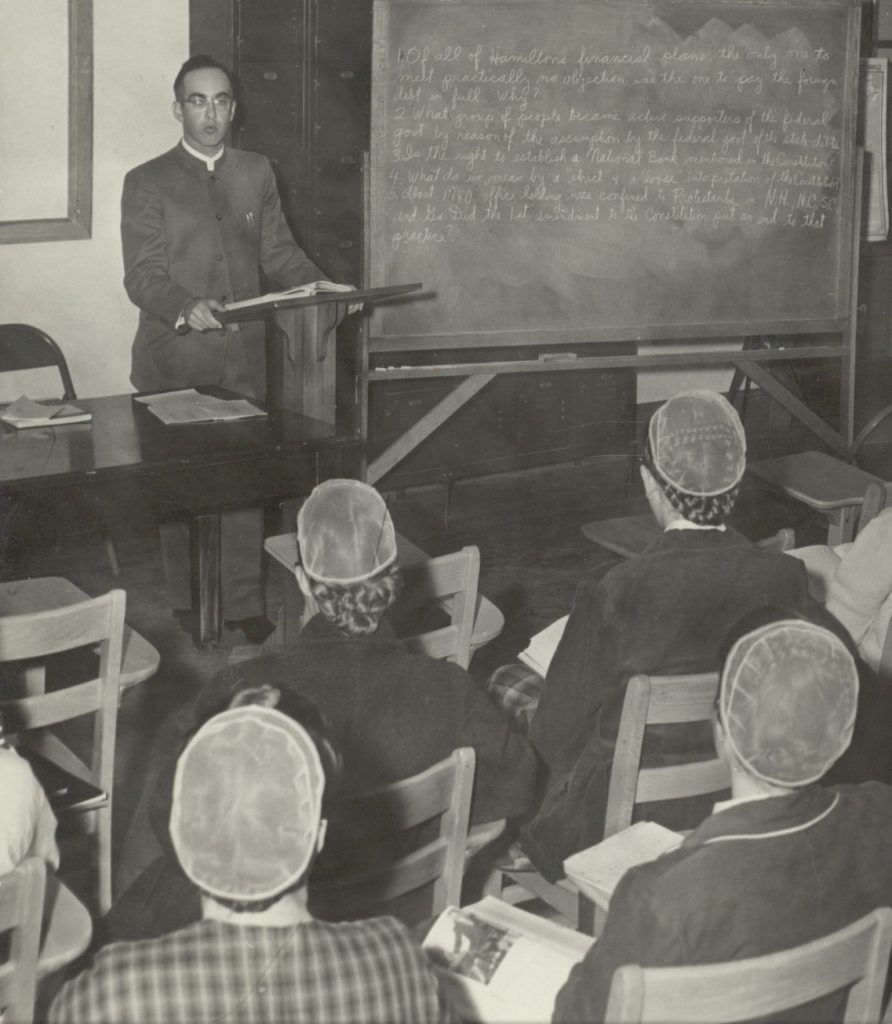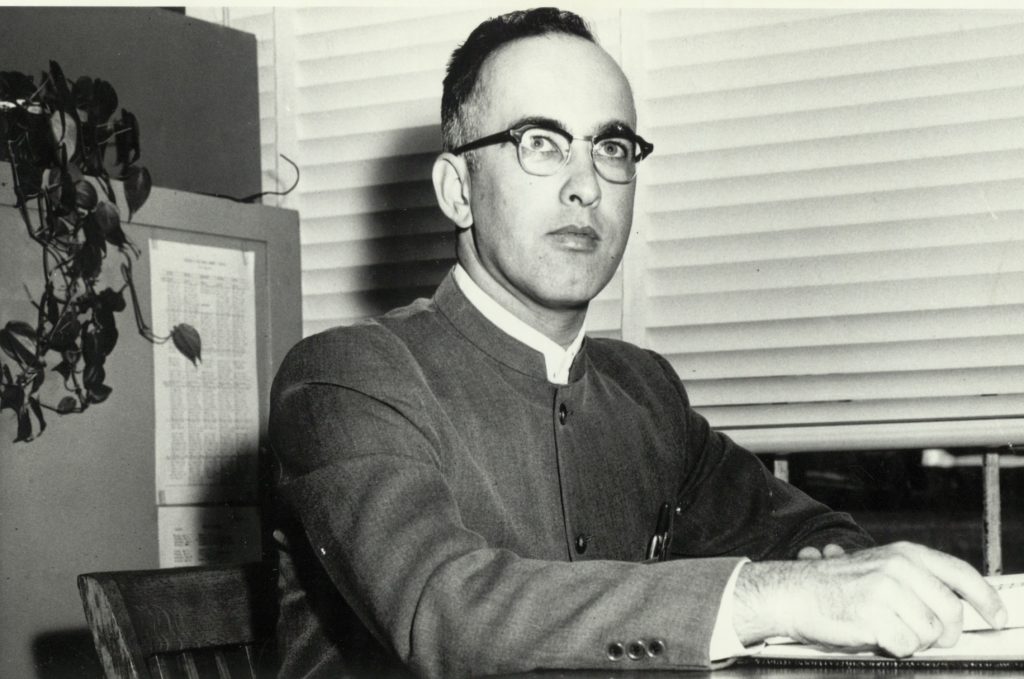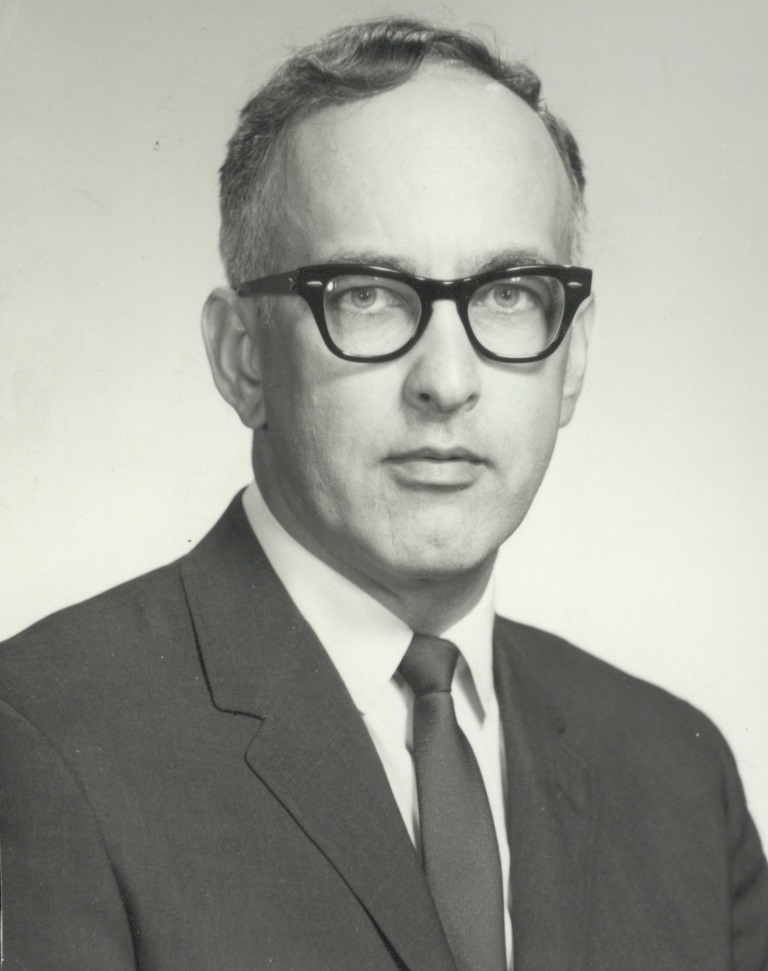Harold Daniel Lehman ’36, a Park View neighborhood native who taught in nearly every local institution in the Harrisonburg area and touched the lives of many who would go to become teachers themselves, died Sunday, Aug. 25, 2019, at Virginia Mennonite Retirement Community. He was 98.
Local family members will receive guests at McMullen Funeral Home on Friday, Aug. 30, 2019, from 7-8 p.m. A memorial service will be Sunday, Oct. 6, at 2:30 p.m. at Park View Mennonite Church with the Revs. Phil Kniss and Paula Stoltzfus officiating. Burial will be held privately at Weavers Mennonite Cemetery.

Third-generation educator
Born in 1921, in Millersville, Pa., Harold moved with his parents, Daniel Webster and Ada Neff Lehman, to Harrisonburg that year. His father was an early faculty member at Eastern Mennonite School, and Harold grew up in the Park View neighborhood. He earned a two-year college degree at EMS and began his teaching career at the age of 18 in Rockingham County Public Schools, first at Caplinger School in Criders, and then at Fulks Run. Read more about his experiences in a 2016 Crossroads article.
In 1942, he completed a bachelor’s degree through summer course work at Madison College and one year at Bridgewater College. From 1942-46, he was a member of the Civilian Public Service, serving in Galax, Va., at a mental hospital in New Jersey, and at the Vineland Training School for mentally disabled children and adults in Vineland, N.J.
In 1944, Lehman married Ruth Krady at her home in Lancaster County, Pa. They returned to Park View and raised four sons.
Between 1946 and 1967, he held several positions at Eastern Mennonite College and High School, teaching physical education and high school courses in English and American history (1946-56), as director of the high school (1956-62), and as college registrar (1962-67). During this period, he also completed a master’s degree at Penn State University and received a Doctor of Education degree from the University of Virginia in 1961.
To Madison and later endeavors

In 1967, he joined the Department of Secondary Education at Madison College (later James Madison University), where he taught until his retirement in 1986.
Lehman was active in the Human Relations Council during the years of school integration in Harrisonburg and Rockingham County. As part of the Conrad Grebel lecture series, sponsored by the Mennonite Board of Education, he authored “In Praise of Leisure” in 1973. He also wrote a 50th anniversary history of Laurelville Mennonite Church Center (“Where There is Vision”) in 1993 and a 50th anniversary history of Park View Mennonite Church, where he was a longtime member, (“Through These Doors”) in 2003.
In retirement, he and Ruth did voluntary service in Birmingham, England, helping to compile a history of new religious movements. He was an avid tennis player, taking part in a weekly tennis foursome until he was well into his 80s. He maintained his inquisitive nature and his love of learning until his death, gladly reading every book and magazine that he was given or lent.

In 2009, Lehman contributed a chapter to an anthology, Making Sense of Our Journey: The Geography of our Faith (Cascadia Publishing House, 2009), one in a series of memoirs published by the Anabaptist Center for Religion and Society. His biography comments on his close ties to the Park View area, but also on expanded horizons:
Today I may be the oldest continuous resident of Park View. The defining events of my life, however, involved stepping out of the village. There was cross-town teaching at James Madison University and association with Semester in London programs. Traveling with my wife, Ruth, and TourMagination founders, Gleysteen and Cressman, brought on-site exposure to our Anabaptist heritage in Europe. With the Comparative Education Society I studied secondary and higher education on both sides of Europe’s iron Curtain (1968) and later in Cuba. There were trips to visit family members in Bolivia and Kenya. With retirement came VS in England and residence in a Quaker community. Now at the Virginia Mennonite Retirement Community I am close to my first home and elementary school in Park Woods. Ruth and I are back in the village, now a Harrisonburg suburb, to stay.
He was preceded in death in 2012 by his wife of 67 years, Ruth Krady Lehman.
Survivors include four sons and daughters-in-law, Kenneth and Jackie Lehman, Daniel and Barbara Lehman, David Lehman and Jan Harmon, and Larry Lehman and Jane Gatewood; five grandchildren, Susan (and Matt) Bouchonville, Hadley (and Brett) Bachman, Benjamin Lehman, Michael (and Melissa) Lehman, and Christian Lehman; three great-grandchildren, Zachary and Emily Bouchonville and Avelea Bachman; and three brothers, Paul (and Erma) Lehman, Mark Lehman, and James (and Connie) Lehman. In addition to his wife, Ruth, he was preceded in death by a sister, Elsie Lehman, and a sister-in-law, Pauline Lehman.
Lesson for the day (see chalkboard, top photo)
*We think Dr. Lehman, a consummate historian, would approve of providing a transcription of his questions from the chalkboard:
- Of all of Hamilton’s financial plans, the only one to meet practically no objection was the one to pay the foreign debt in full. Why?
- What group of people became active supporters of the federal government by reason of the assumption by the federal government of the state debts?
- Is the right to establish a National Bank mentioned in the Constitution?
- What do we mean by a “strict” + “loose” interpretation of the Constitution?
- About 1780, office holding was confined to Protestants in N.H., N.C. S.C. and Ga. Did the 1st amendment to the Constitution put an end to that practice?

We at Laurelville Mennonite Church Center are grateful for Harold and Ruth Lehman’s contributions to our ministry. One legacy that lives on and is enjoyed by many is a book they wrote for us called, “Where There Is Vision, the Laurelville Story 1943-1993.” We celebrated 75 years this past year and remain thankful for their decades of fine contributions here. Prayers to your family.
I appreciated reading about Harold. I remember him well. I’m 94 years old and am living at a retirement village I Chambersburg, PA called Providence Place. I graduated from EMC with the class of 1965.
I grew up next door to Harold. He was Uncle Daniels oldest, 6 years ahead of me, one of the “big boys” of Park View. Memories would fill a book. One of them would be the way he served a tennis ball. I tried my best to imitate his style with little success.
We shared the same building here at VMRC for many years. I miss him.
As Program Director at Laurelville, beginning in 1995, I was grateful for the history of the camp/retreat center Harold published. It helped orient me to the Church Center, even though I had often visited it in its early days when my father, Roy, was often Camp Pastor and weekly Director. I also recall seeing him about campus when I was a frosh at EMC in 1961-62.